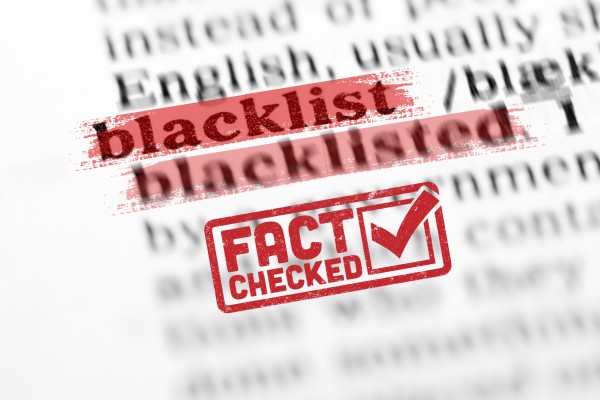Handy Suggestions To Picking Credit Card Apps
Wiki Article
What Are The Indicators Of Suspicious Behaviour That Could Result In Your Credit Card Being Blacklisted By Your Bank?
The credit card issuer could flag or block an account with a credit card if certain actions or behavior raise warning flags. Examples of suspicious behaviour are: Buying Patterns
The suspicion can be raised due to abruptly large transactions or a marked increase in spending when compared with the cardholder’s usual behavior.
Unrecognized transactions
Fraud can be detected by any transaction that is unauthorized or suspicious that are reflected on the statement, which the cardholder didn't create or approve.
Multiple declined transactions
A number of failed or declined transactions in a very short period of time, particularly if a cardholder usually has a history of positive transactions might indicate a potential problem.
Geographic Anomalies
Multiple transactions in a short period of time in locations quite different from the normal spending area for a cardholder or transactions from locations that are significantly different from their normal spending areas can raise suspicion.
Abnormal Purchase Types
Purchases that are unusual, particularly for costly items that are not compatible with the cardholder's spending habits, can be flagged as suspicious.
Uncommon Online Behavior
Unusual or unusual online activity may be a sign of unauthorized access. This includes numerous failed login attempts or changes to account information.
Card usage that is not typical
Any instances where the credit or debit card is utilized in a different way than its normal pattern of use, for instance, suddenly using it for international transactions despite previous used only locally, is a red flag.
Sudden Cash Advances & Transfers
The cardholder will receive an alert if large cash advance or transfers occur that aren't usual in his expenditure.
Frequent Card Transactions that are Not Present
A sudden rise in card-not present transactions (online or over-the-phone transactions) without prior records of such transactions could be investigated.
Issues with Identity Verification
If you're having difficulties verifying the cardholder during transactions, this might raise suspicion, especially if further verification is needed.
The card issuer can investigate these actions and may stop the card temporarily until they are able to verify the identity of the cardholder as well as the legitimacy of the transaction.

What Should I Do If I Suspect That My Credit Card Is Blacklisted?
It is recommended to take the following actions when your credit card is listed on a list or there is a suspicion of fraud. Call Your Credit Card Issuer immediately-
Contact the customer support number that appears on the reverse of your credit card. Check the issuer’s website for an exclusive hotline to report fraudulent transactions.
Inform your issuer that you are concerned. Inform them that you suspect fraud or the security of your card could be compromised.
Report Suspicious Activity-
You must explain any transaction you suspect are suspicious or not authorized on your statement.
Details about the transactions are needed, including dates, amounts and the names of the merchants, if any.
Request Card Replacement or Blocking
If you'd like to prevent any further transactions that are not authorized you can request that the credit card's issuing company temporarily blocks the card.
Find out about the replacement procedure of the card to continue to be able to access credit.
Review your account and dispute charges
You might have missed suspicious transactions or activity on your account in the event that you didn't review the recent transactions and account statements.
If you find unauthorized transactions with your credit card, contact the card issuer to have them investigated.
Verify Your Credit Score, and Keep Note of It
Make contact with the credit card company to ensure that the necessary steps have been taken in order to resolve your issues.
Keep an eye on your account to determine whether there have been any changes or suspicious activity.
Think about putting in Fraud Alerts, or Security Freezes
Based on the severity of the incident depending on the severity, you could decide to put a fraud freeze or alert on your credit report to safeguard yourself against identity theft and future fraud attempts.
Report to Authorities-
If you suspect fraud or identity theft is taking place, report the issue to the Federal Trade Commission and file an official police report in the area you live in.
It is essential to act quickly to minimize potential losses and prevent further fraudulent transactions. Making a report of suspicious activity quickly and working with the credit card company can assist you in reducing the effects of possible credit card fraud.
Cybersecurity Experts Detect And Monitor Cyber Threats Such As Stolen Credit Cards.
Cybersecurity professionals employ a range of strategies, tools and methods to detect and track cyber-attacks, including compromised credit card data. Below are a few of the more popular methods.
It is important to collect information from different sources, like threat intelligence feeds (such as forums) and dark web monitoring and security advisory to be aware of the latest security threats and vulnerabilities.
Network Monitoring & Intrusion Detection
Software and tools that monitor the network traffic to identify suspicious activity, anomalies or other signs of unauthorized access.
Vulnerability and Penetration TestsVulnerability and Penetration Tests
Regular assessments can help detect weak spots in the network, applications and systems. Penetration test mimics attacks against an organization to find vulnerabilities and evaluate its security position.
Security Information and Event Management, (SIEM),
Implementing SIEMs to analyze and consolidate log data (from firewalls, applications, and servers) in order to detect, track, and react immediately to security breaches.
Behavioral Analysis
Conducting behavioral analyses to find patterns that are distinctive or distinct from the normal behavior of users in the network or system, which may indicate a potential breach.
Threat HuntingThreat Hunting
The identification of potential threats is done by analyzing logs, data traffic and the system's information.
Endpoint Security Solutions
Installing solutions for endpoint protection (such antimalware, antivirus, and detection and response tools for devices) is a great way to safeguard your devices from threats.
Encryption and Data Protection-
Implementing encryption techniques to protect sensitive information such as credit card numbers when it is transferred and stored can reduce the chance that data breaches occur.
Incident Response and Forensics-
Develop and implement plans for incident response to respond quickly to security-related incidents. Conducting forensic analyses to analyze security breaches and identify the impact they have on organizations and their causes.
Cybersecurity experts blend these methods with a deep knowledge of the latest cyber threats, compliance regulations, and best practices to proactively identify, mitigate, and address cyber-related threats, including those involving compromised credit card information. An active security strategy that is constantly monitored and intelligence on threats are vital for maintaining a strong cyber defense. Follow the top rated savastano cc for more advice.
